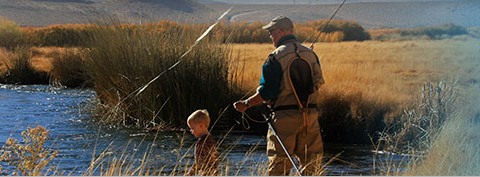Femur Fracture
The femur, or thigh bone, is the longest and strongest bone in the body, connecting the hip to the knee. A femur fracture usually occurs from a high energy injury, such as a ski or mountain bike crash or a motor vehicle accident. Patients with osteoporosis, bone tumor or infections, or a history of knee or hip replacement are also more prone to femur fractures. In the elderly, even a simple fall from a standing position may result in a fracture as the bones tend to become weak and fragile with advancing age.
Types
- Distal femur fracture: The distal femur is the lower part of the thigh bone which flares out like an upside-down funnel. Its lower end enters the knee joint and is covered by a smooth, slippery articular cartilage that protects and cushions the bone during movement. Fractures of the distal femur may involve the cartilaginous surface of the knee and can result in arthritis. Other distal femur fractures occur above the knee joint, but still usually require surgery as they usually result in significant instability and deformity.
- Femoral shaft fracture:A femoral shaft fracture is a break that occurs anywhere along the femoral shaft, the long, straight part of the femur. These are often unstable and are usually fixed surgically, typically with a rod down the center of the bone or sometimes with a plate and screws.
- Proximal femur fracture: A proximal femur fracture, often referred to as a hip fracture,is a break of the proximal end of the femur near the hip. [See Hip Fractures]
Femur fractures may be caused by high energy injuries such as a fall from height or a motor vehicle accident.
Sudden, severe pain along with instability, swelling and bruising are the predominant symptoms of femur fractures. The site is tender to touch, often with a visible physical deformity and shortening of the leg.
The diagnosis of femur fracture is based on the patient’s medical history, including history of any previous injuries, complete physical examination and imaging studies. The physician will evaluate the soft tissue around the joint to identify any signs of nerve or blood vessel injury. Multiple X-rays and other imaging studies such as CT and MRI scans may be used to identify the location and severity of the fracture.
The management of the fracture is based on the severity of the fracture, medical condition of the patient and the patient’s lifestyle.
Non-surgical treatment is essentially only used for completely non-displaced fractures or for patients who are too ill to undergo surgery.
The goal of surgical treatment is realigning and stabilizing the fractured bone, while at the same time allowing for early mobilization of the patient after surgery. The use of advanced technology and special materials has improved the surgical outcome even in older patients. The type of fixation depends on the location and character of the fracture. Timing of surgery is an important factor in improving the surgical outcome.
Timing of surgery
In most cases, the surgery isundertaken as soon as the patient is well enough to do so. . Delaying surgery unnecessarily means the patient will be confined to their bed longer, and will be at greater risk of developing complications of bed immobilization like bed sores, blood clots, etc.
External fixator
An external fixator is used when the surrounding soft tissue is severely damaged, as the use of plates and screws may be harmful. The external fixator maintains the alignment of the bone till surgery.
Once the patient is ready for the definitive surgery, the surgeon removes the external fixator and places internal fixation devices
Internal fixation
Internal fixation may be performed using intramedullary nailing or plates and screws. In intramedullary nailing a metal rod is inserted into the marrow canal of the femur to keep the fractured fragment in position. Plate and screw fixation achieves the same result with hardware attached to the outside of the bone. If the fracture is comminuted or the bone has broken into many pieces, plates or rods may be used to bypass the smaller fragments and achieve fixation only at the ends of the bone without disturbing the smaller pieces. The plate or rod will maintain the shape and length of the bone until it heals. In elderly patients and those with poor bone quality, bone grafting may be used to improve the healing. Knee replacement may also be considered in complicated distal femur fractures with very poor bone quality.
Rehabilitation
Rehabilitation aftera femur fracture depends upon several factors such as age, general health of the patient and the type of fracture. A rehabilitation program is initiated along with the treatment, comprised of instructions on weight bearing, knee and hip movements, and the use of external devices such as braces. Recovery from femur fracture takes most patients a year or more, and it may take longer to walk without a limp.





















